Game performance guide: uncovering the best Death Stranding PC graphics settings
After weeks of planning and preparation, my basement laboratory is finally ready. I have a top-of-the-line gaming PC on my desk alongside an expansive 4K gaming monitor. There’s a stack of graphics cards nearby that’s big enough to make my younger self wilt with envy. I’ve got a carafe of coffee fresh from the French press and a liter of ice water. Hydration matters, even in my underground lair. It’s time to fire up a game and see how to make it sing on this hardware.
Today’s title under test is Death Stranding, Hideo Kojima’s first post-Metal Gear game. To help you get the best performance out of this title, I ran through all of its graphics settings to determine their effect on frames per second and gathered performance data at several common display resolutions on a range of graphics cards. Read on for our recommendations on fine-tuning its settings for your system. And if you’re in need of an upgrade to enjoy everything Death Stranding has to offer, you’ve come to the right place. Below, you’ll find all the data you need to purchase the best PC hardware for this game.
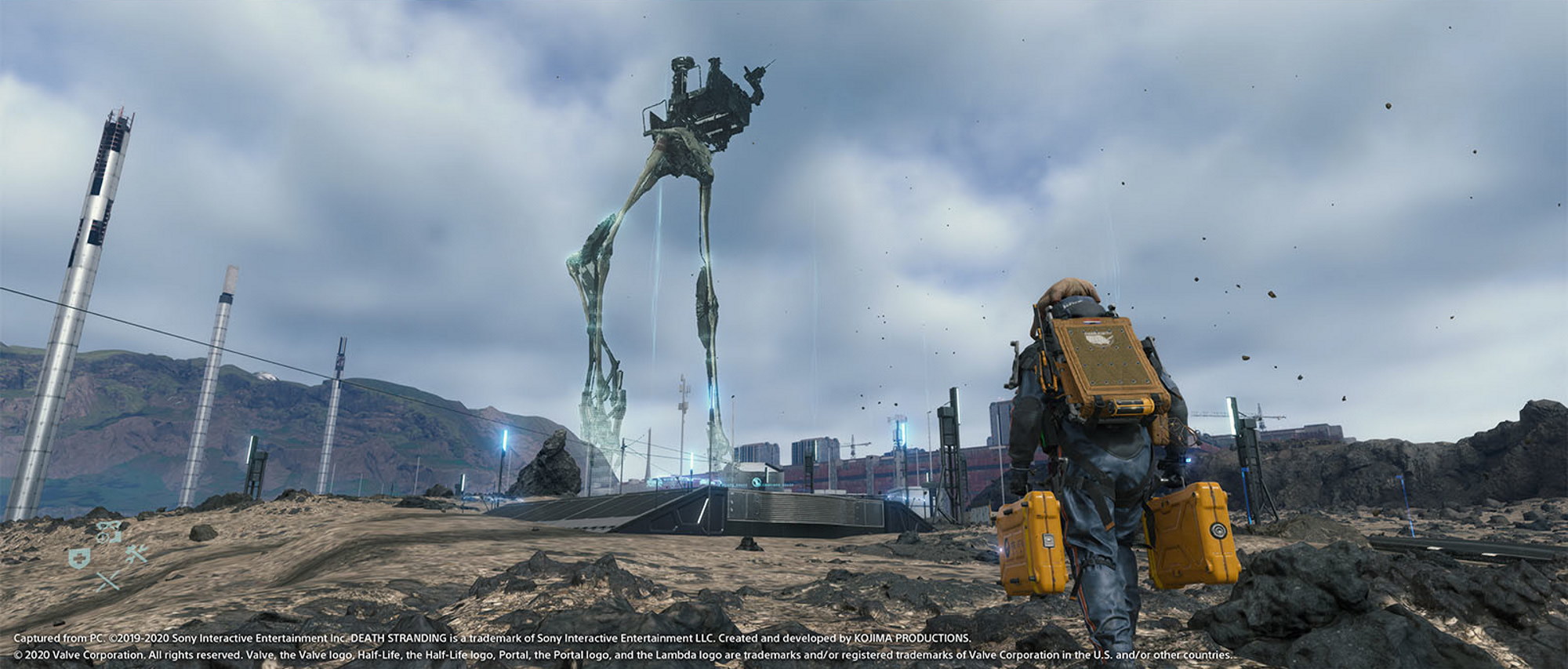
Image courtesy Gamesplanet
Playing Death Stranding on PC gives you Kojima’s full vision of its grim yet compelling world. The PC platform gives you the option to play at up to 240 fps, with higher quality graphics settings than were available in the PlayStation version, and at a range of resolutions and aspect ratios. You’re in a for a treat if your rig has the chops to turn up the game’s dials and switches. Death Stranding is an absolute showcase for 4K and high dynamic range (HDR) gaming. Best yet, its support for NVIDIA’s Deep Learning Super Sampling 2.0 (DLSS 2.0) tech puts cutting-edge effects and resolutions within arm’s reach of a wide audience.
Testing notes
To ensure the most accurate performance numbers for Death Stranding, we used a top-of-the-line ROG Strix GA35 as our test bed.
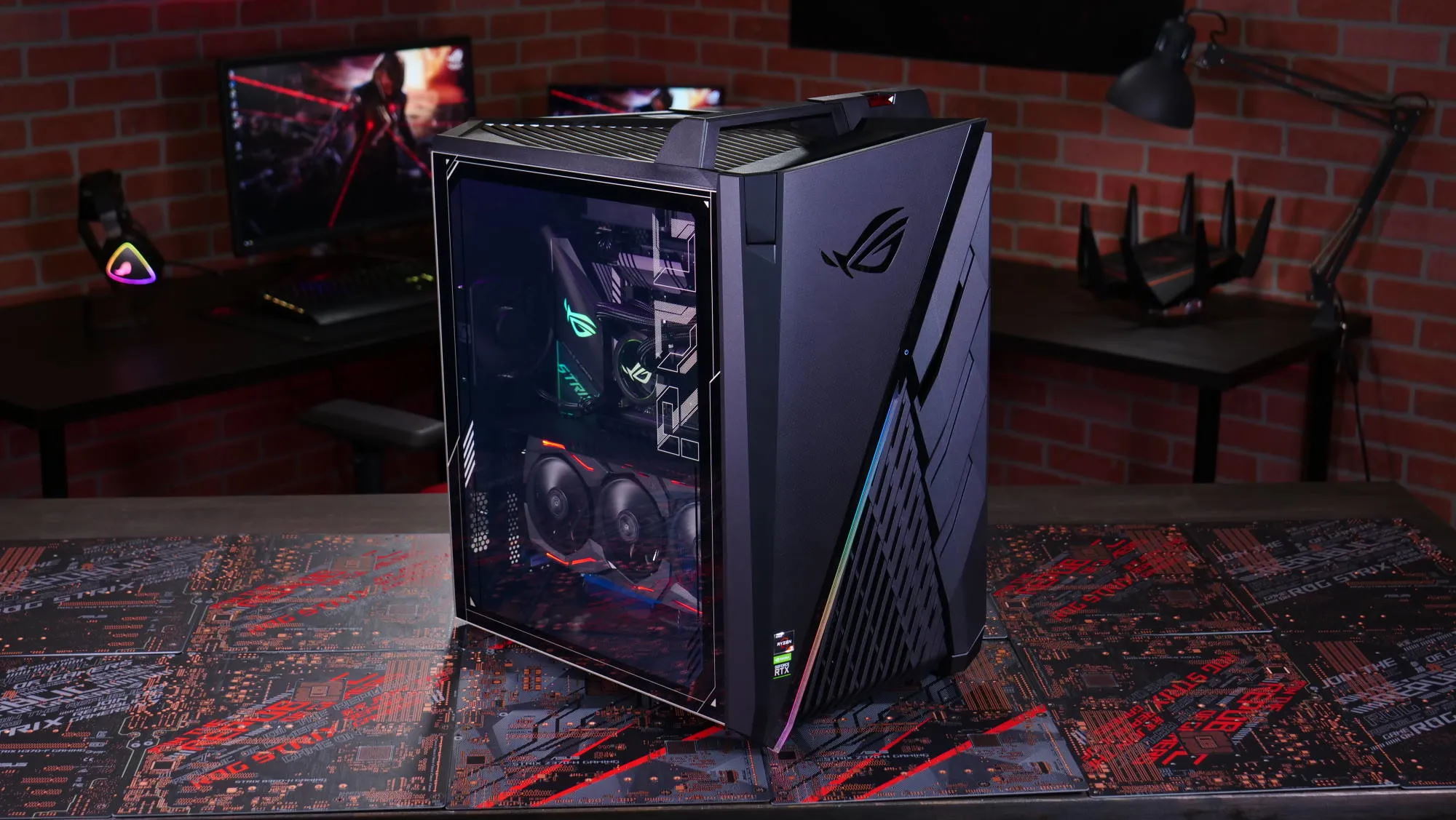
The otherworldly processing power of its AMD Ryzen 9 3950X CPU, 32GB of RAM, and 1TB NVMe SSD make it the perfect host for all the graphics cards we’ll be testing today. For a closer look at what the GA35 can do, check out our hands-on article.
| ROG Strix GA35 | |
|---|---|
| Availability (USA) | |
As we present performance data in this guide, you’ll see two terms crop up quite a bit: average frames per second (fps) and 95th-percentile fps. What you see on your screen during a game is a quick succession of frames. Each frame is a still picture, a rendering of what’s happening at that precise moment. When these frames are displayed in quick succession, your eye perceives it as continuous motion.
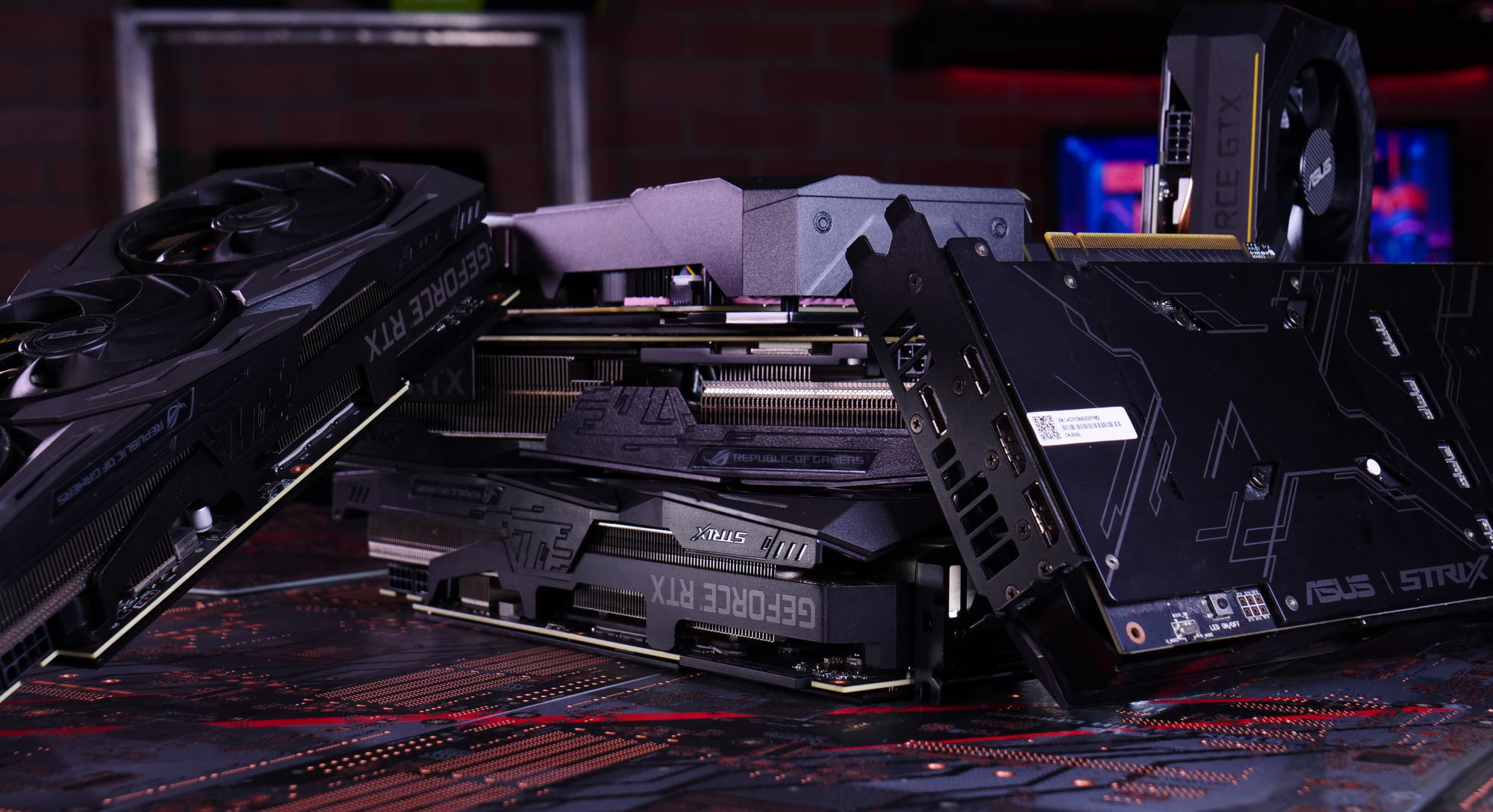
An average fps figure is simply how many frames per second, on average, the tested GPU was able to produce during the benchmark. When you play a game running at a lower average frame rate, you don’t get as natural a sense of motion, and you may not even feel that you’re interacting meaningfully with the game in real-time due to input lag. Higher frame rates result in smoother perceived motion, make you feel more connected to what’s happening on screen, and allow you to react faster to changes in the game.
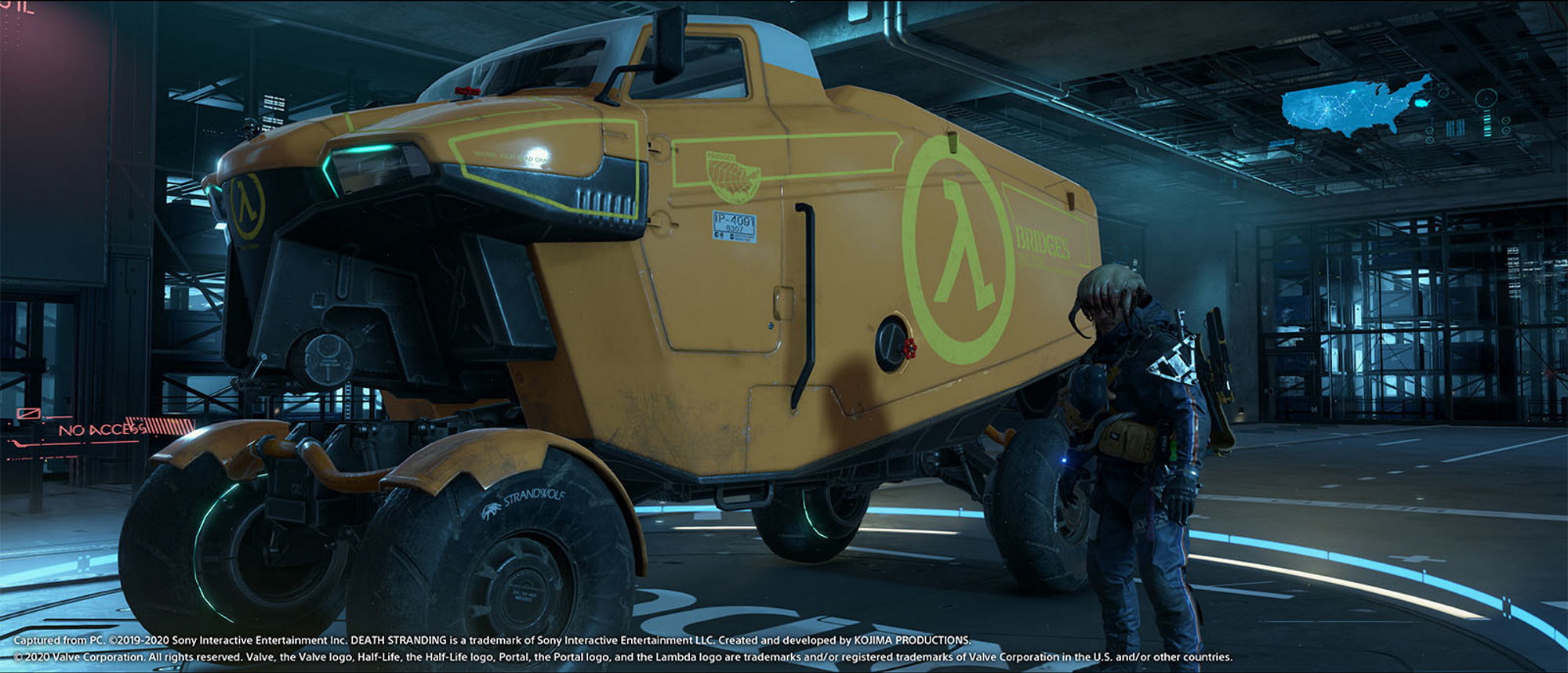
Image courtesy Gamesplanet
95th-percentile fps is another important data point for understanding gaming performance. It’s built on a measurement called the frame time—the amount of time it takes for a GPU to produce a new frame of in-game action in milliseconds. Think of the time it would take you to draw a stick figure versus painting a detailed portrait, and you understand how frame times naturally vary as the complexities of in-game scenes change. If something happens that increases frame times significantly, you’ll probably notice it as a hitch or interruption in the animation. If a lot of these hitches happen in a short amount of time, your perception of smooth motion could be thrown off.
As part of our benchmarking, we record the frame time for each and every frame that the graphics card completes during our testing. Out of this group of many hundreds or thousands of individual frames, the 95th percentile frame time describes the amount of time the GPU needed to complete 95% of them. Conversely, it omits the highest 5% of frame times from our measurements, preventing outliers from skewing the data.
To make that frame time roughly comparable to average fps, we convert it to 95th-percentile fps, dividing 1000 ms by the 95th-percentile frame time. 95th-percentile fps is a decent way of quantifying the “worst” performance you would regularly see in a benchmark. The closer the 95th percentile frame rate is to the average frame rate, the smoother the gaming experience.
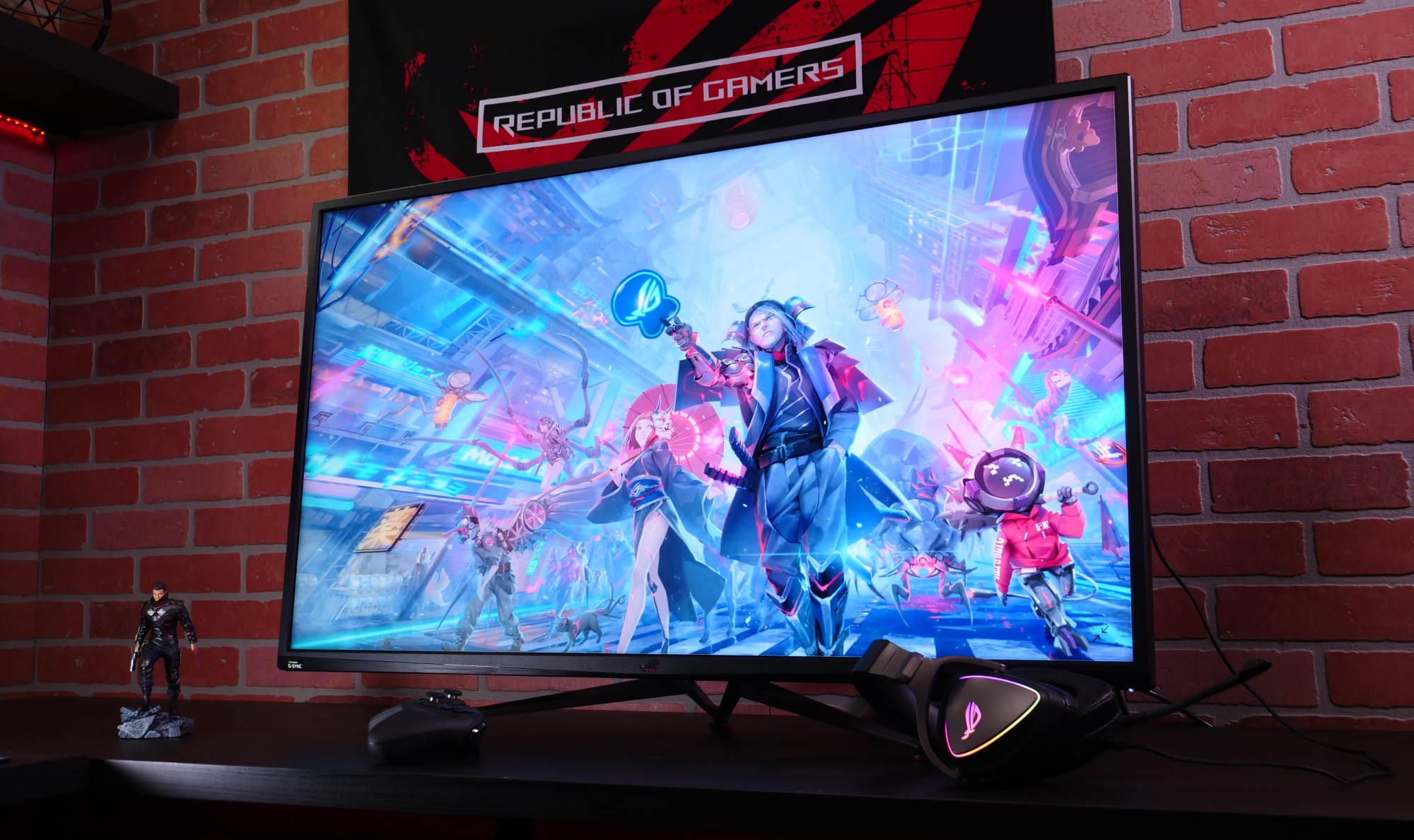
I used our massive ROG Swift PG43UQ gaming monitor to show me all that Death Stranding has to offer. This 43” 4K display and its 144Hz refresh rate give me an incredibly up-close and personal look at the game world so that I can accurately report on the effect that different graphics settings have. For a complete look at the PG43UQ’s features, check out our hands-on coverage.
| ROG Swift PG43UQ | |
|---|---|
| Availability (USA) | ASUS Amazon B&H Micro Center |
| Availability (Canada) | Memory Express |
To collect performance data, we use a low-overhead, open-source software tool called OCAT to record frame times over the course of 60 seconds. For every test you see in this article, I ran through the exact same sequence in Death Stranding. I took my character right outside Capital Knot City and took a stroll along the beach. With the long view down the water, the looming mountainsides full of boulders, and the sunlight reflecting across the surface of a stream running into the ocean, this scene is representative of how you’ll spend a lot of your time in-game. I ran each benchmark three times, and reported the median result.
The graphics cards that I had on hand for testing include some of the finest high-end GPUs available today, as well as some of the most popular midrange and entry-level cards. The list starts with the ROG Strix GeForce 2080 Ti. It’s a favorite for 4K, high-refresh-rate, and VR gaming. I also have the full range of NVIDIA’s GeForce RTX SUPER cards: the ROG Strix GeForce RTX 2080 SUPER, the ROG Strix GeForce RTX 2070 SUPER, and the ROG Strix GeForce 2060 SUPER. As one of the most popular graphics cards among gamers today, the ROG Strix GeForce RTX 2060 needs no introduction. The ROG Strix GeForce GTX 1660 SUPER rounds out our roster. Let’s get to it.
Optimizing Death Stranding's graphics settings
Compared to the overwhelming set of options in some games out there, the graphics settings submenu in Death Stranding is fairly straightforward. I’m happy to see support for high resolutions, ultrawide aspect ratios, and high refresh rates, all prime reasons for enjoying this title on a PC. There’s HDR support on tap, too. The deep blacks that only an HDR monitor can produce make the inky liquid that floods the world in a BT attack all the more ominous.
To test the relative performance impact of the different graphics options in Death Stranding, we used the GeForce RTX 2060. This graphics card is not only one of the most popular models on the market. It’s also squarely in the midrange price bracket. Running these tests with this card allows us to make recommendations for most gamers, because if a setting has a negligible impact on frame rates for the RTX 2060, it’s likely to have a similar effect on most gamers’ systems.
Death Stranding’s graphics menu gives you four basic presets. “Default” is tuned to be most similar to the experience of the PlayStation version. PC gaming enthusiasts are likely to be most interested in the eye-candy-loaded “Very High” preset. “Medium” and “Low” offer greater performance, but most of the eye-candy options are turned down or off.
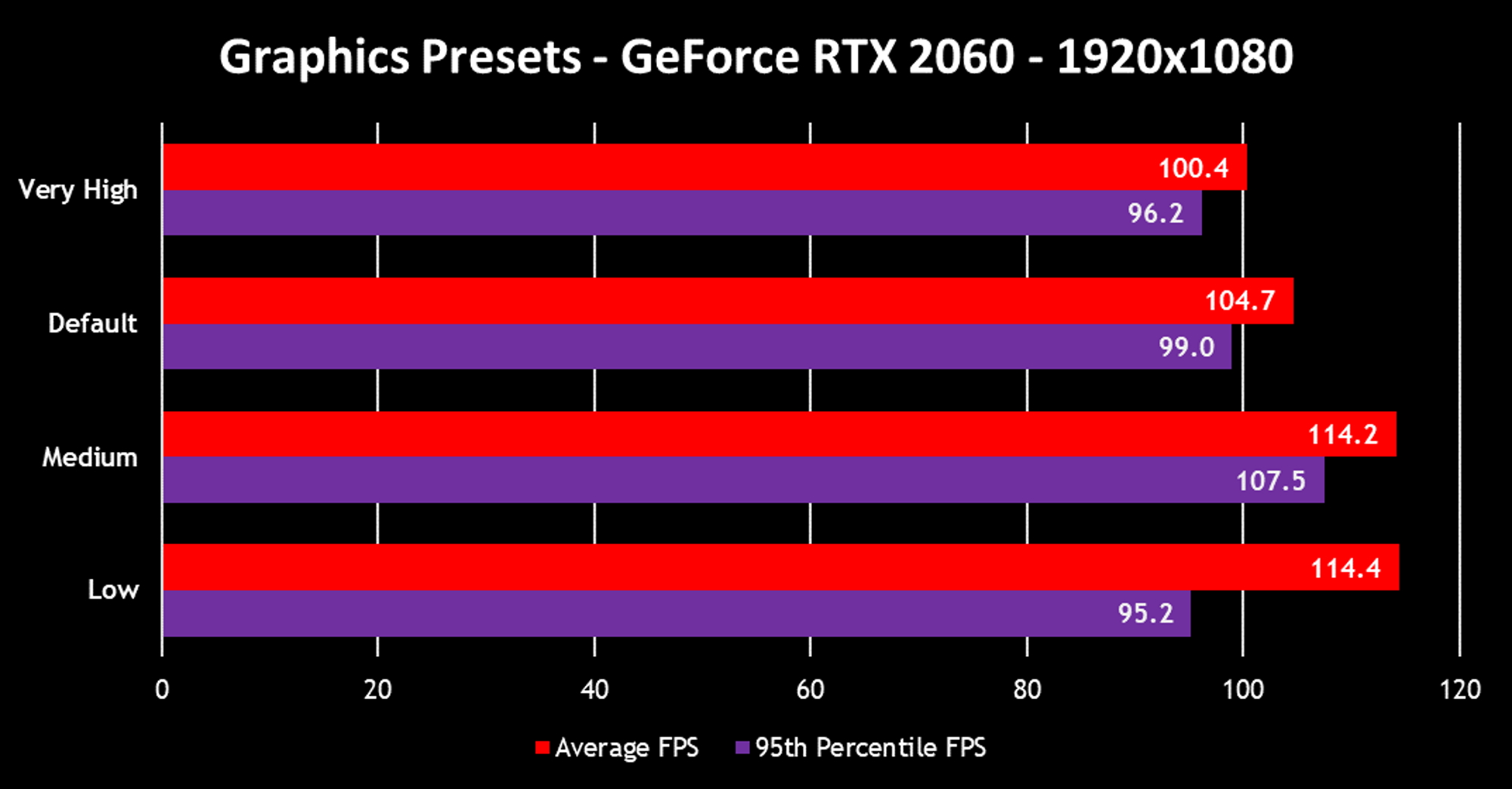
On a GeForce RTX 2060, you’ll gain about 14% more average fps using the Low preset than you will on the Very High preset. In terms of average fps, the Medium and Low presets really aren’t that far apart, so we recommend sticking with the former rather than the latter. The Very High preset has a relatively low performance cost compared to Default, about 5% in our testing with the RTX 2060. If your system is running fine at Default, it’s worth your time to try out Very High.
Of course, you’re not limited to the preset options. A number of Death Stranding’s finer graphics controls have minimal impact on game performance, and we recommend leaving them maxed out.
Follow your personal preference with motion blur. I couldn’t detect a meaningful performance difference between enabling and disabling that setting. Depth of field, screen space reflections, and ambient occlusion should all be left enabled, as they all have only minor impacts on frame rates yet provide definite improvements to image quality. I found that changing the shadow resolution did not substantially affect performance, so I also recommend leaving this setting maxed out.
Antialiasing settings are often a good place to make adjustments if you’re seeing low fps, but that’s not the case with Death Stranding. The game gives you two antialiasing options: FXAA and TAA. Neither will substantially reduce your frame rate, but both are clear improvements over disabling antialiasing entirely.
If you select one of the two upscaling techniques, NVIDIA DLSS 2.0 or AMD FidelityFX Contrast Adaptive Sharpening (CAS), then Death Stranding will automatically pick an antialiasing setting for you. If you’re not using one of those settings—and more on those in a moment—then TAA is the superior choice. FXAA smooths out jaggy edges, and does so at essentially no performance cost, but TAA goes a step further and reduces the visible shimmer along the edges of objects. This antialiasing mode only costs about 3 fps, and it’s worth enabling if at all possible. The thin black tendrils that dangle ominously from the sky are really distracting to look at without it.
If you need to improve in-game performance, what settings should you adjust? By far, the most significant way to improve the frame rate in Death Stranding is to enable NVIDIA DLSS at its “performance” preset. This feature is limited to owners of one of NVIDIA’s GeForce RTX GPUs, as it relies on the Tensor cores in these chips to function. With DLSS 2.0 enabled, the game will render at a lower internal resolution (hence the higher fps) and then use AI-powered techniques to upscale each frame to your target display resolution.
What can you expect from enabling DLSS 2.0? I did three rounds of testing of the setting using the GeForce RTX 2060, first getting a baseline with the setting disabled, then at its performance preset, and finally at its quality preset. All other graphics settings were at their default values.
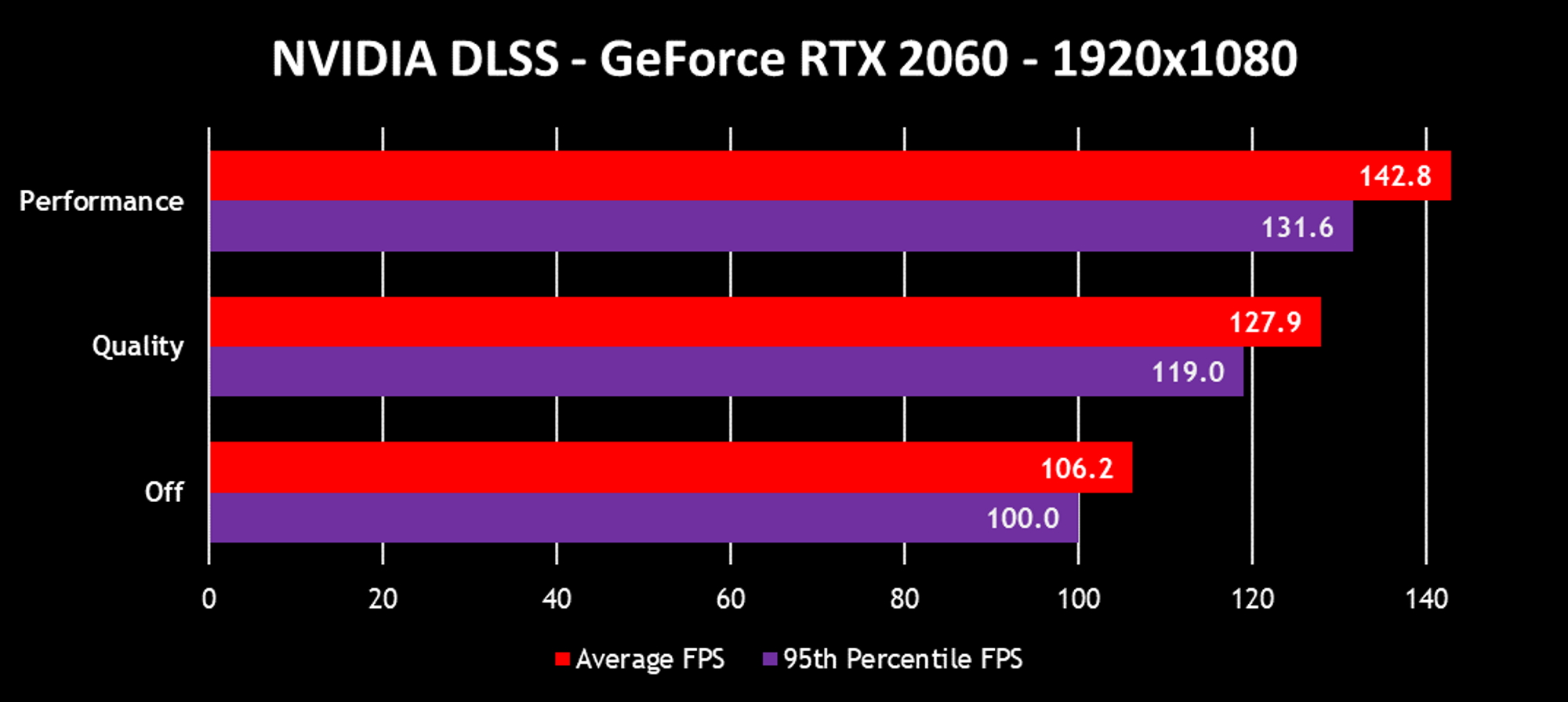
Enabling DLSS 2.0 in this circumstance increased my average fps by a whopping 34%. What’s more incredible is that I was hard-pressed to find any differences in image quality with DLSS 2.0 enabled, even at its performance preset. The clear takeaway here is that if you have DLSS available as an option, then you should just leave it enabled and enjoy the extra performance.
If you don’t have an RTX graphics card and need an fps boost, the FidelityFX CAS upscaling option is worth enabling on both NVIDIA and AMD GPUs. By my eye, this technique doesn’t produce quite as clean an image as DLSS. Aliasing was much more noticeable on the edges of objects.
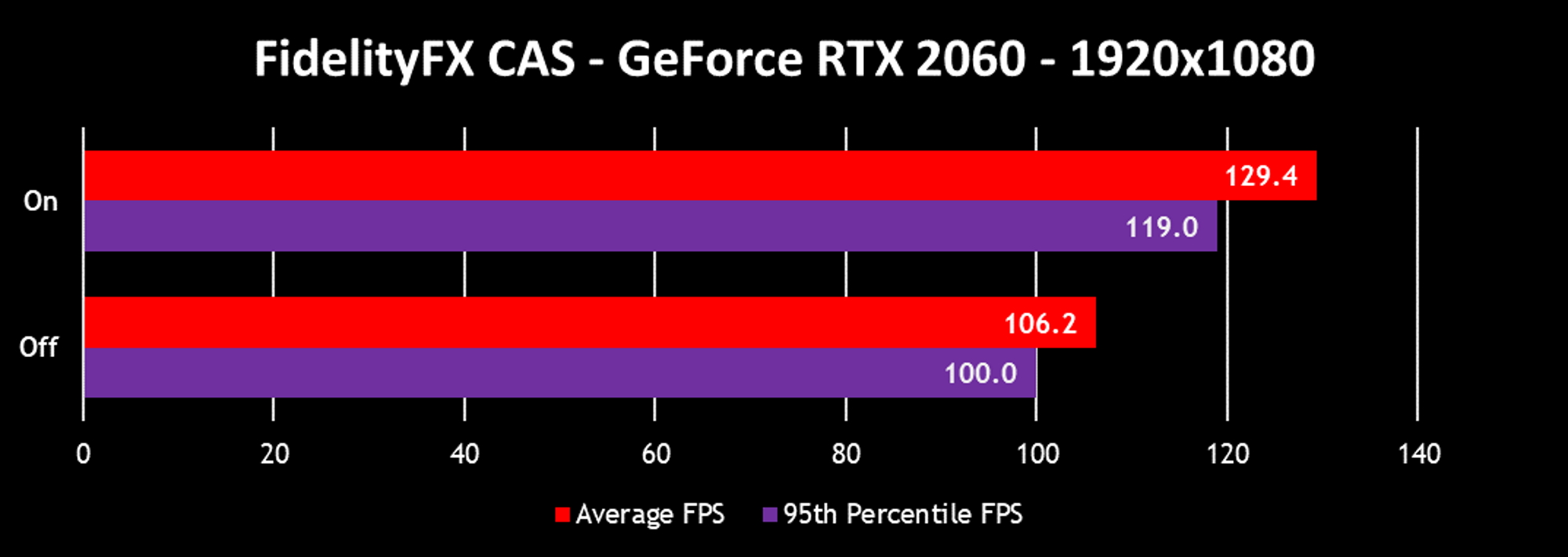
I can’t argue with the increased performance that comes with enabling FidelityFX CAS, though, and its broad compatibility is a point in its favor. Flipping that switch led to an fps increase on par with the DLSS 2.0 quality preset. Once again, I recommend using one of these techniques if they’re available, preferring DLSS 2.0 if you have a GeForce RTX graphics card.
Two more settings are worth close inspection. The first is model detail. The PC version exposes four levels of control. The “very high” preset is a nice bump up in fidelity from the game’s original console implementation.
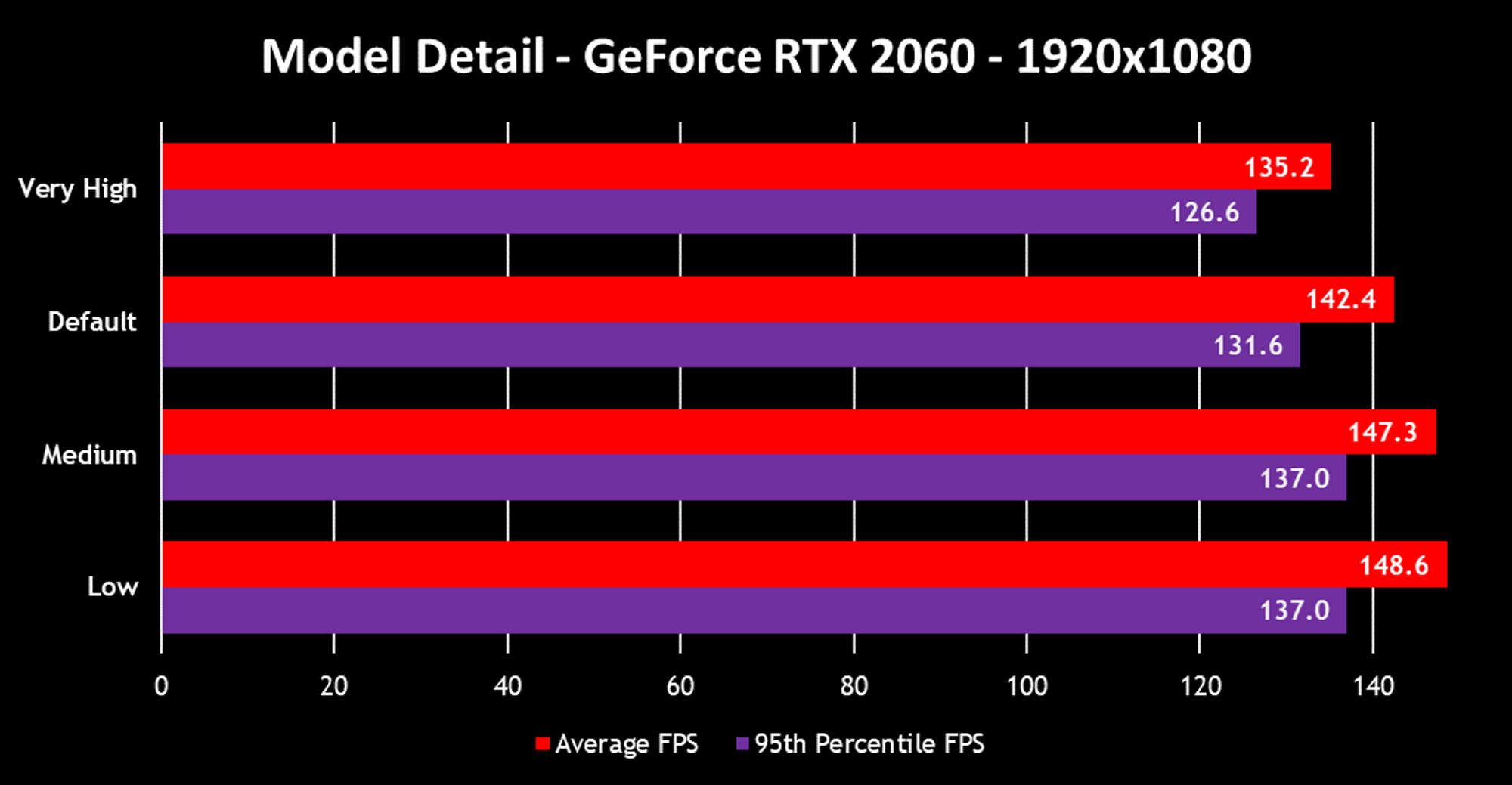
There’s not much daylight between the medium and low settings, at least with an RTX 2060 at 1920x1080. The very high preset comes at the price of 9% lower fps on average compared with the low preset. If your system can’t quite handle your current suite of settings, try dropping model detail down to medium.
Finally, the “memory for streaming” setting is worth some discussion. By “streaming,” it does not refer to sharing your gameplay on Twitch. Rather, it’s talking about the under-the-hood process of making assets available in the GPU’s memory. This means you actually want this setting as high as your graphics card’s VRAM will allow.
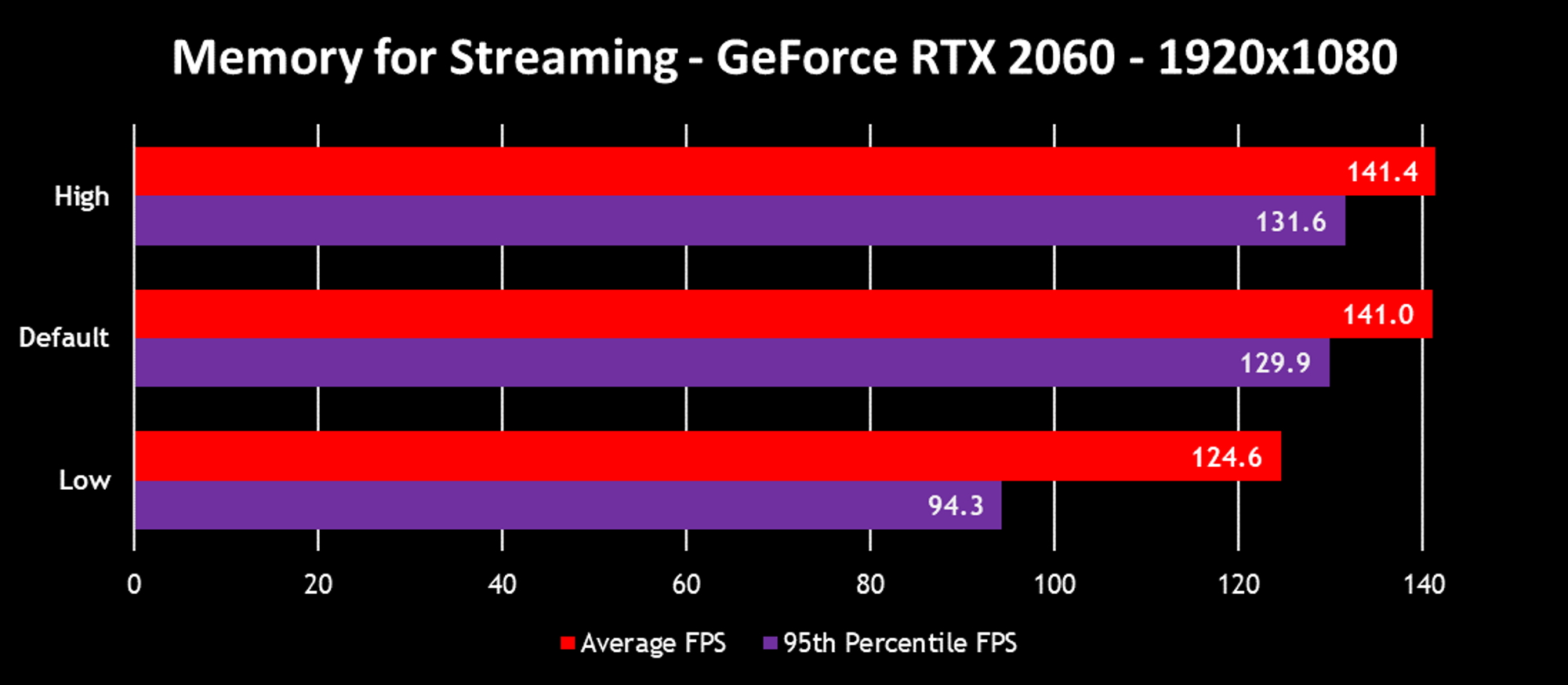
The RTX 2060 has 6GB of VRAM, which is more than enough for the game’s needs at 1920x1080. That’s why there’s no discernible difference between the high and default options here. Dropping the setting down to “low” actually decreases the average fps I observed, though. The larger-than-normal gap between the average fps and the 95th-percentile fps shows how perceived hitches and stutters increased during gameplay. That’s the result of performance hitches as the game “streams” textures in and out of the arbitrarily-limited pool of VRAM available to it.
Leave this setting at its default value if at all possible unless you have a card with a substantial amount of VRAM, in which case you should gladly bump this up to high. Drop to low only if you have an older-generation graphics card with a very limited quantity of VRAM.
System utilization
A few quick notes about Death Stranding’s overall PC footprint. Install size is 64.9GB, which is significant but not unusual for a recent AAA title.
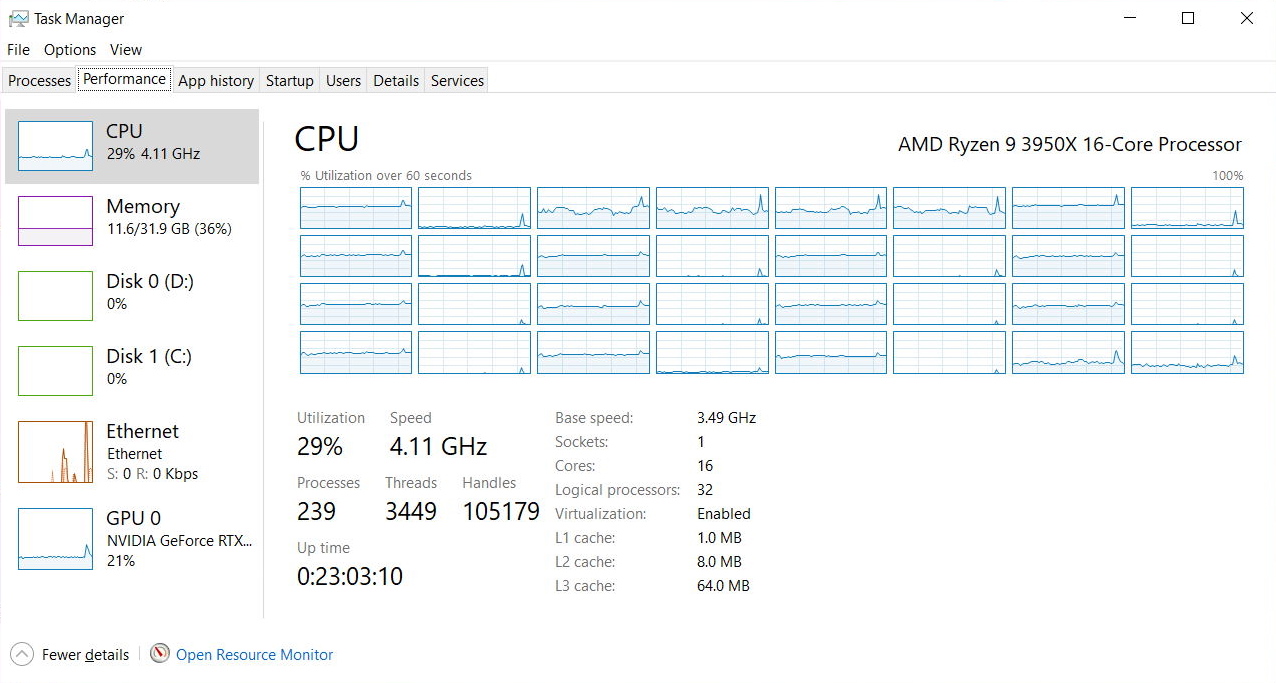
The performance monitoring pane in the Windows task manager fills in the rest of the important details. The game makes plenty use of the CPU resources available in the GA35, spreading work over many of this chip’s 32 threads. Overall CPU usage hovered around 30% and peaked at 60%. Memory utilization increased to 12.4GB of RAM while I had Death Stranding loaded. Officially, the game only requires 8GB, but it appears that it doesn’t hurt to have a bit more.
Benchmarking Death Stranding at 1920x1080
While we’ve been poring over the RTX 2060’s performance figures for each graphics option, the other GPUs on my desk have been champing at the bit to render Death Stranding. Time to unleash our other cards and see what they can do.
To benchmark each GPU, I used the same benchmark run I employed to test each in-game setting. This time, I left the graphics setting at its Very High preset, only making sure to disable Vsync and enable DLSS 2.0 on compatible GPUs. I tested each card at three resolutions. Let’s start things off with a look at each card’s performance at 1920x1080.
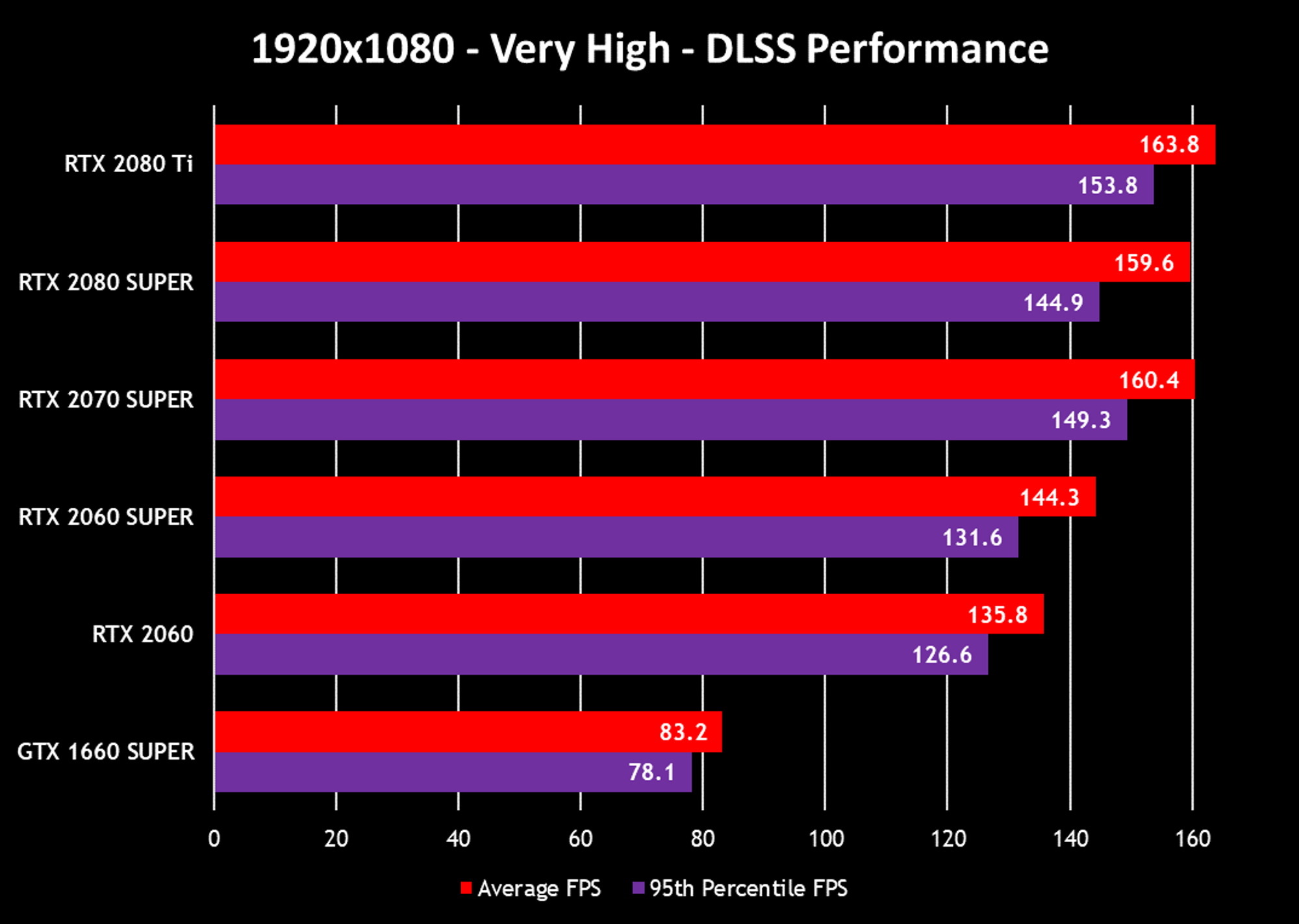
Our entire list of GPUs can deliver excellent performance at 1920x1080. It’s remarkable how quickly they run Death Stranding at this resolution, even at the highest preset.
The three fastest GPUs in the list perform quite similarly at this resolution, indicating that the game may no longer be GPU-bound. Instead, it’s likely limited by how fast the rest of the system can feed work to the graphics card. If you only have a 1920x1080 monitor, it’s likely not necessary to grab a GPU more powerful than the GeForce RTX 2070 SUPER.
The GTX 1660 SUPER earns a shout-out here. Its 83 fps average may not stand out on this graph, considering the numbers posted by the GeForce RTX cards. But even without the assistance of DLSS 2.0, it still yields a high fps average and a tight 95th percentile frame rate. Let’s take a closer look at its results with a plot of frame rates over time. This type of graph maps the changes in frame rate during our benchmark so that you can see how performance varied over time.
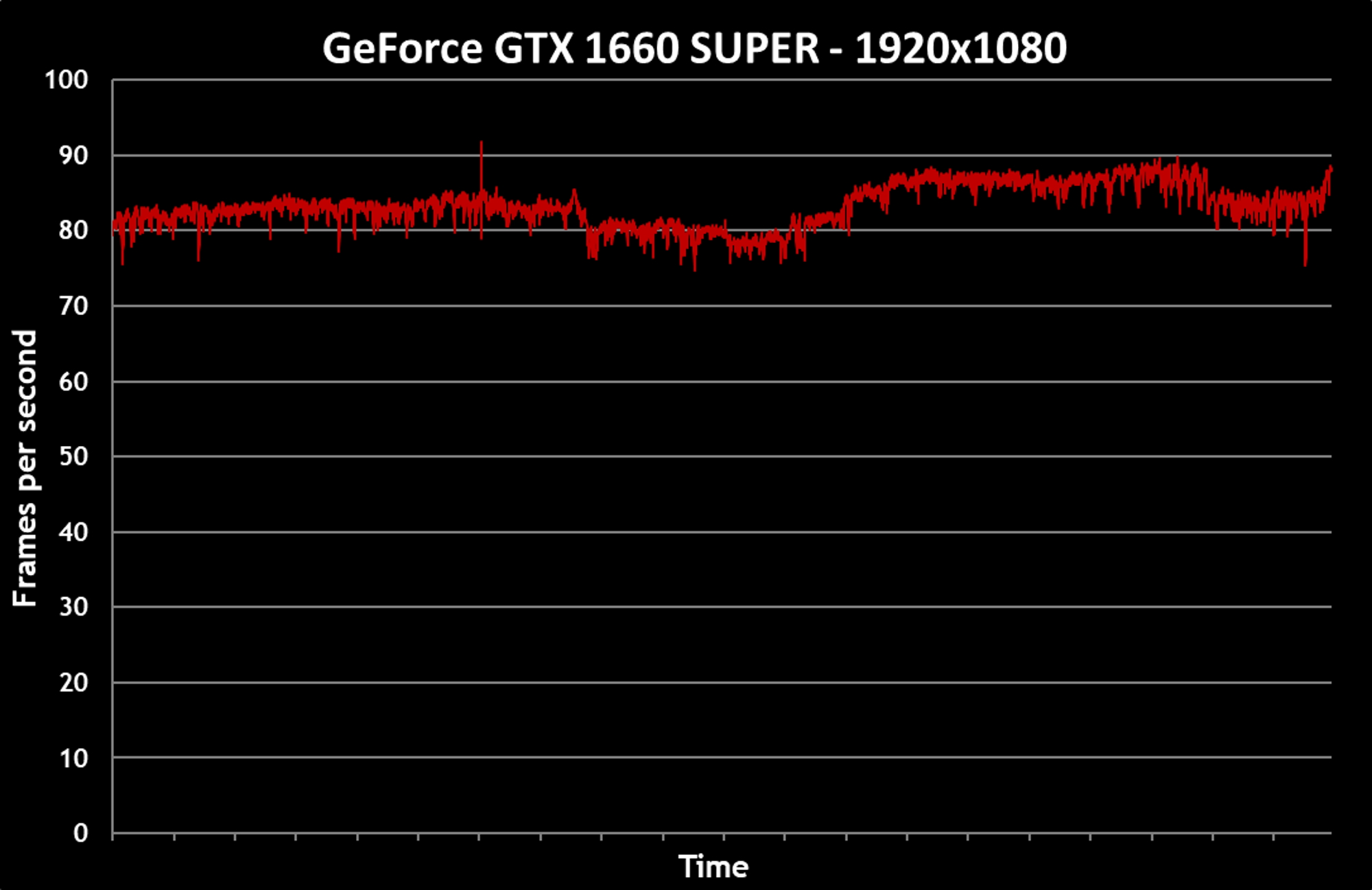
The GeForce GTX 1660 SUPER’s performance is remarkably stable. When frames are presented so consistently, you’ll get a very smooth visual experience. It’s important to note here that this test was conducted with the Very High preset. If this is the card that fits your upgrade budget, don’t worry about its ability to play Death Stranding at a high level at 1920x1080.
| ROG Strix GeForce GTX 1660 SUPER Advanced Edition | |
|---|---|
| Availability (USA) | ASUS Newegg Amazon Micro Center |
|
Availability (CAD) |
Newegg Memory Express Staples |
Looking back at the performance of all these cards at 1920x1080, it’s notable that all of them can sustain frame rates much higher than 60 fps, on average. At least in this game, if you’re playing with any of these cards on a 1920x1080 display with a 60Hz refresh rate, you’re not taking full advantage of the capabilities of modern hardware.
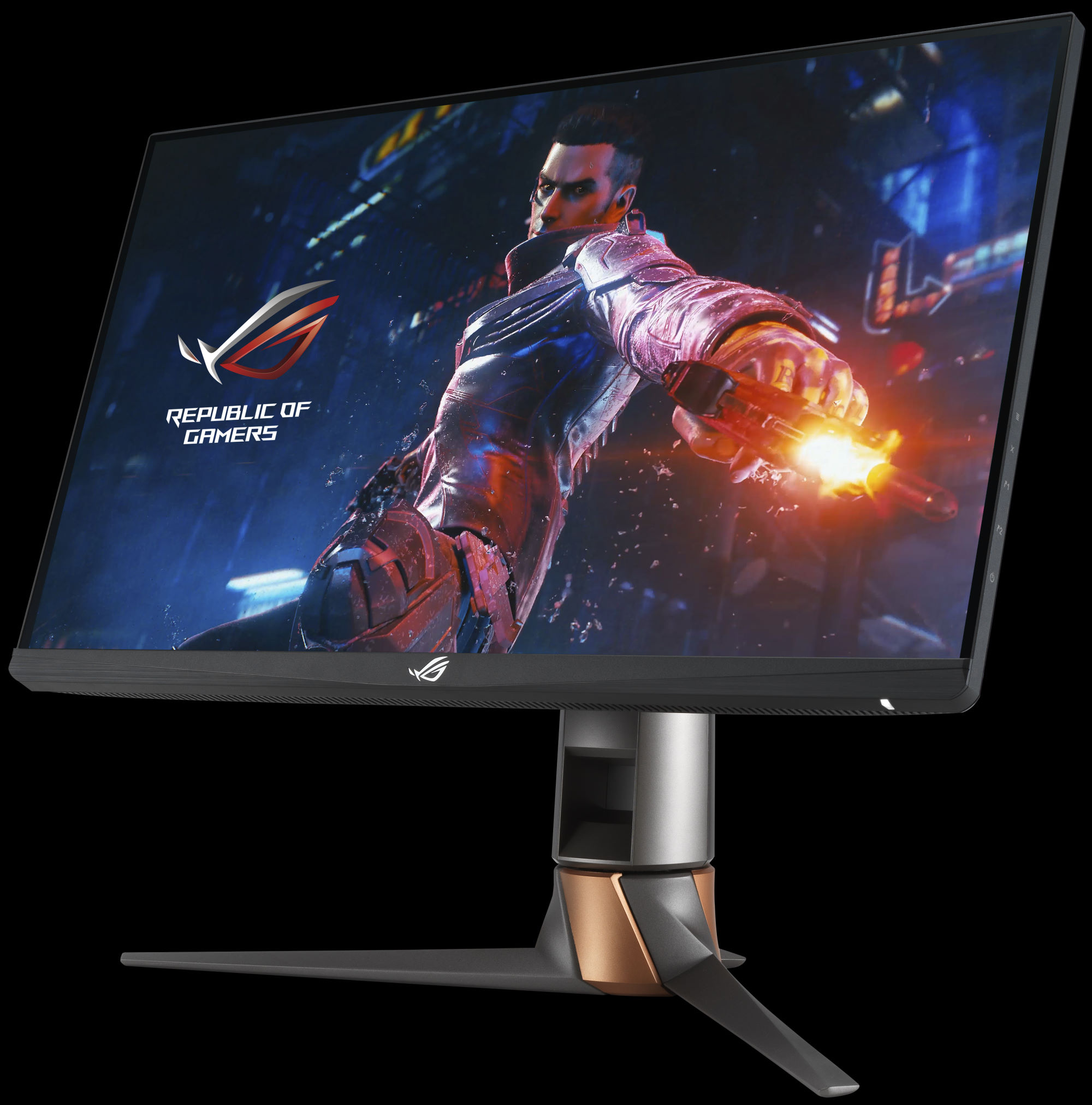
In the ROG lineup, our 1920x1080 displays are where you’ll find some of the fastest refresh rates around. The upcoming ROG Swift 360Hz PG259QN tops out at a blazing 360Hz, and NVIDIA G-SYNC support gives it a vast variable refresh rate range. The PG259QN can easily show every frame possible from Death Stranding at this resolution, and if you enjoy fast-paced esports titles as well as AAA games like this one, you’ll gain an undeniable edge over competitors using 144Hz or even 240Hz displays. It’s a no-compromises 1920x1080 experience.
Benchmarking Death Stranding at 2560x1440
Next up, we’ll take a look at how these cards perform once we increase the resolution to 2560x1440. I’m not exaggerating when I say that no other setting makes a bigger visual impact in Death Stranding. Its world is alive with small, organic details that really don’t come out at 1920x1080. The game’s artists lavished attention on the world’s rocky vistas, and it’s absolutely worth your time to invest in a system and a display that can do their work justice.
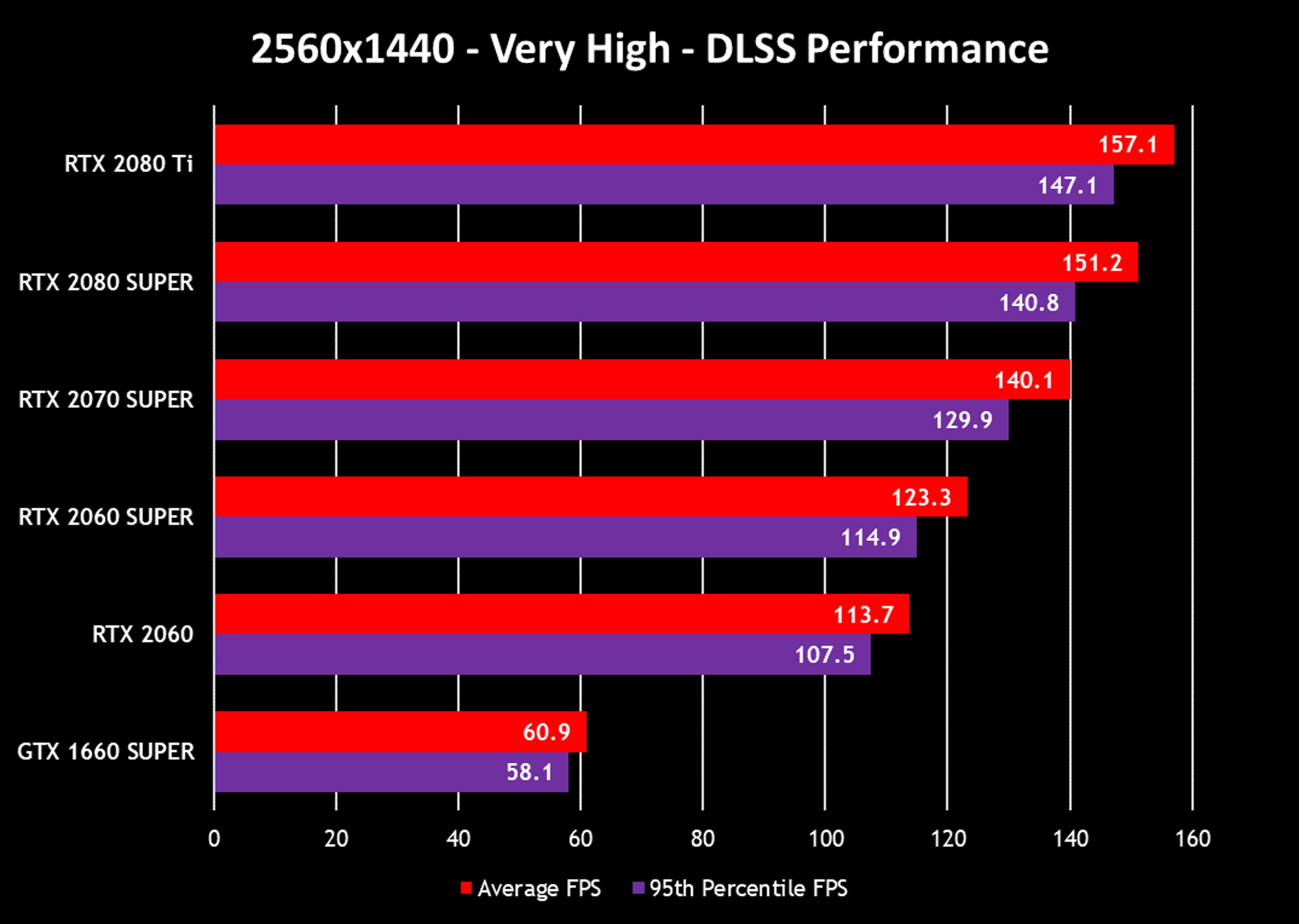
All of the GeForce RTX cards in our test suite serve up exemplary frame rates at 2560x1440. Even without DLSS 2.0 to its advantage, the GTX 1660 SUPER shows some remarkable grit here, delivering an average frame rate of 61 fps. Its results show that 1440p is a more accessible resolution that you might think.
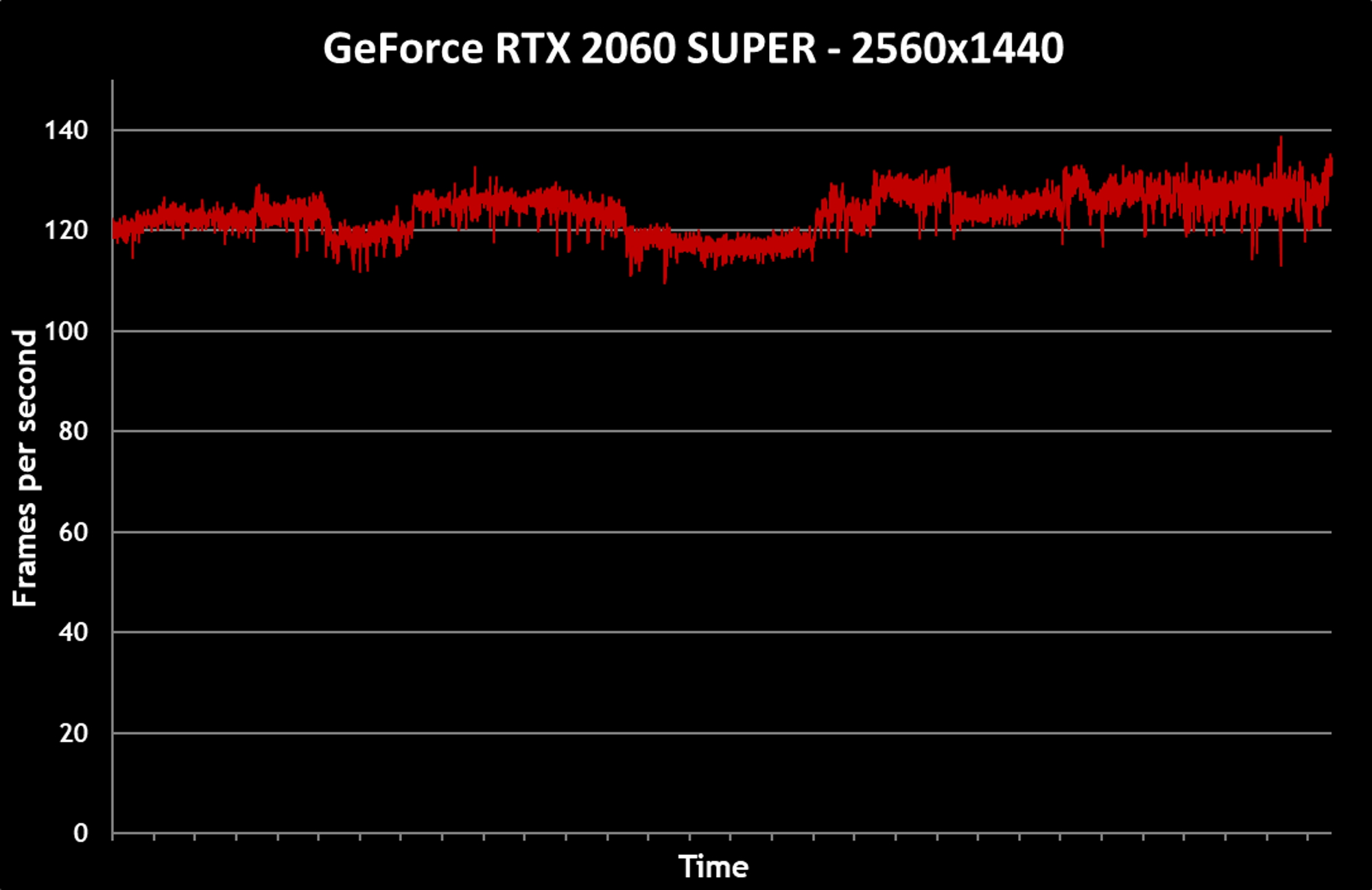
The GeForce RTX 2060 SUPER catches my eye as a prime GPU for playing Death Stranding on a high-refresh-rate 2560x1440 monitor. A close look at its frame rate plot shows that it hovers close to 120 fps and ranges up to 140 fps at times. That performance would sit right in the middle of the G-SYNC range of a 144Hz monitor. Even at this higher resolution, you’d enjoy fluid, tear-free visuals without the drawbacks of Vsync.
| ROG Strix GeForce RTX 2060 SUPER OC Edition | |
|---|---|
| Availability (USA) | Adorama |
|
Availability (CAD) |
Memory Express |
Perhaps you’re in the market for such a monitor. Let me introduce you to the ROG Strix XG279Q. This 27” display boasts a Fast IPS panel with a 1ms response time, and it also has a 2560x1440 resolution that will bring out the detail in Death Stranding.
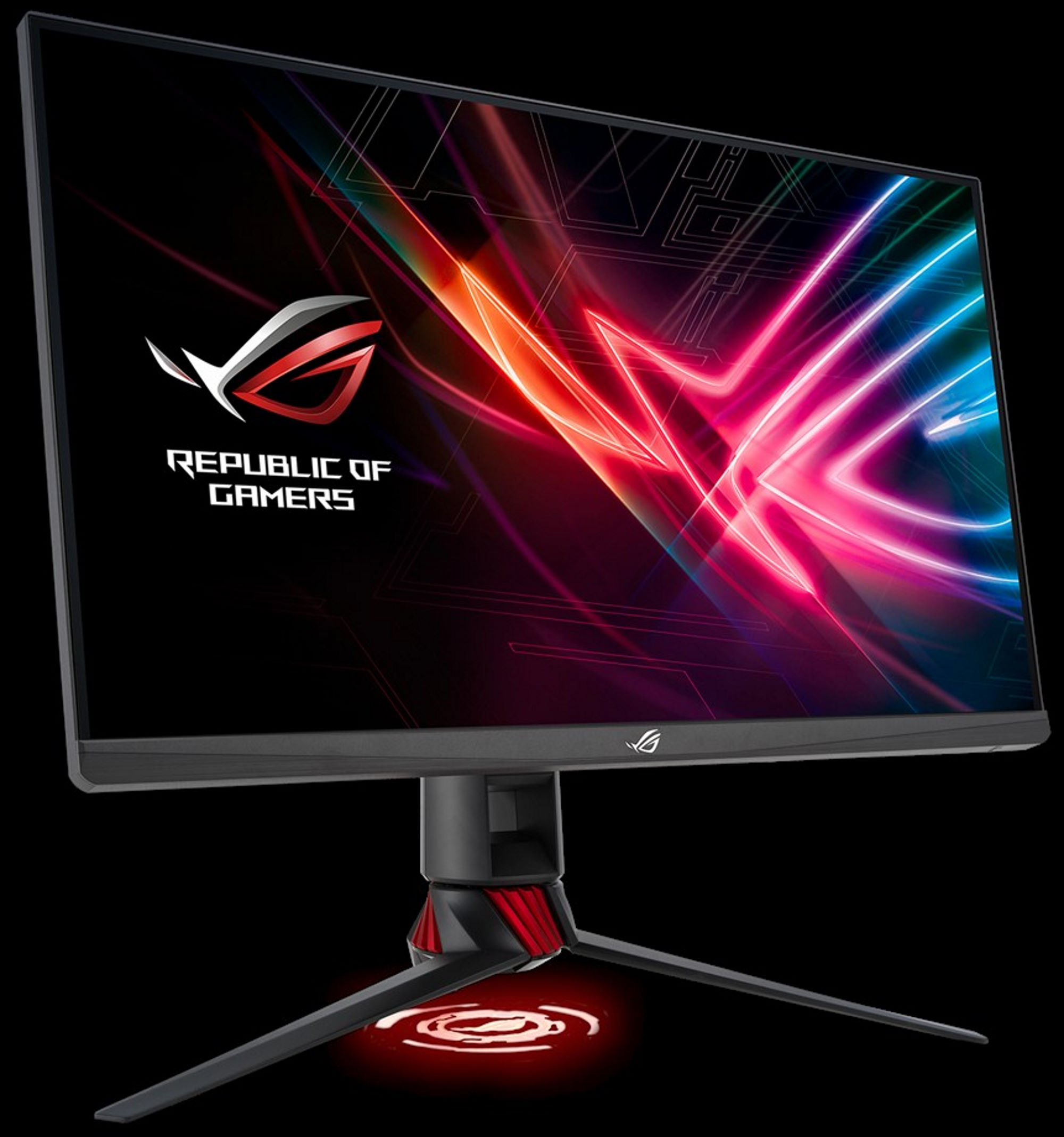
It’s G-SYNC Compatible, and It has a 144Hz refresh rate that can be overclocked up to 170Hz. Its panel aslo covers 95% of the DCI-P3 color gamut, so it’ll paint Death Stranding’s post-apocalyptic America in bright, vivid colors—at least where you can find them.
| ROG Strix XG279Q | |
|---|---|
| Availability (USA) | Amazon B&H Photo Video Newegg |
| Availability (Canada) | Amazon Best Buy |
Benchmarking Death Stranding at 3840x2160
It’s time for one last lap around the track for these graphics cards. Here, we’ll look at their performance at the unforgiving 3840x2160 resolution, better known as 4K. You want to play Death Stranding at 4K if you can. The game is lovely at 1920x1080, but it’s just gorgeous with four times as many pixels to play with. I’ve spent some time hiking above treeline in the real world, and exploring the photorealistic mountain ranges in Death Stranding reminded me vividly of those experiences.
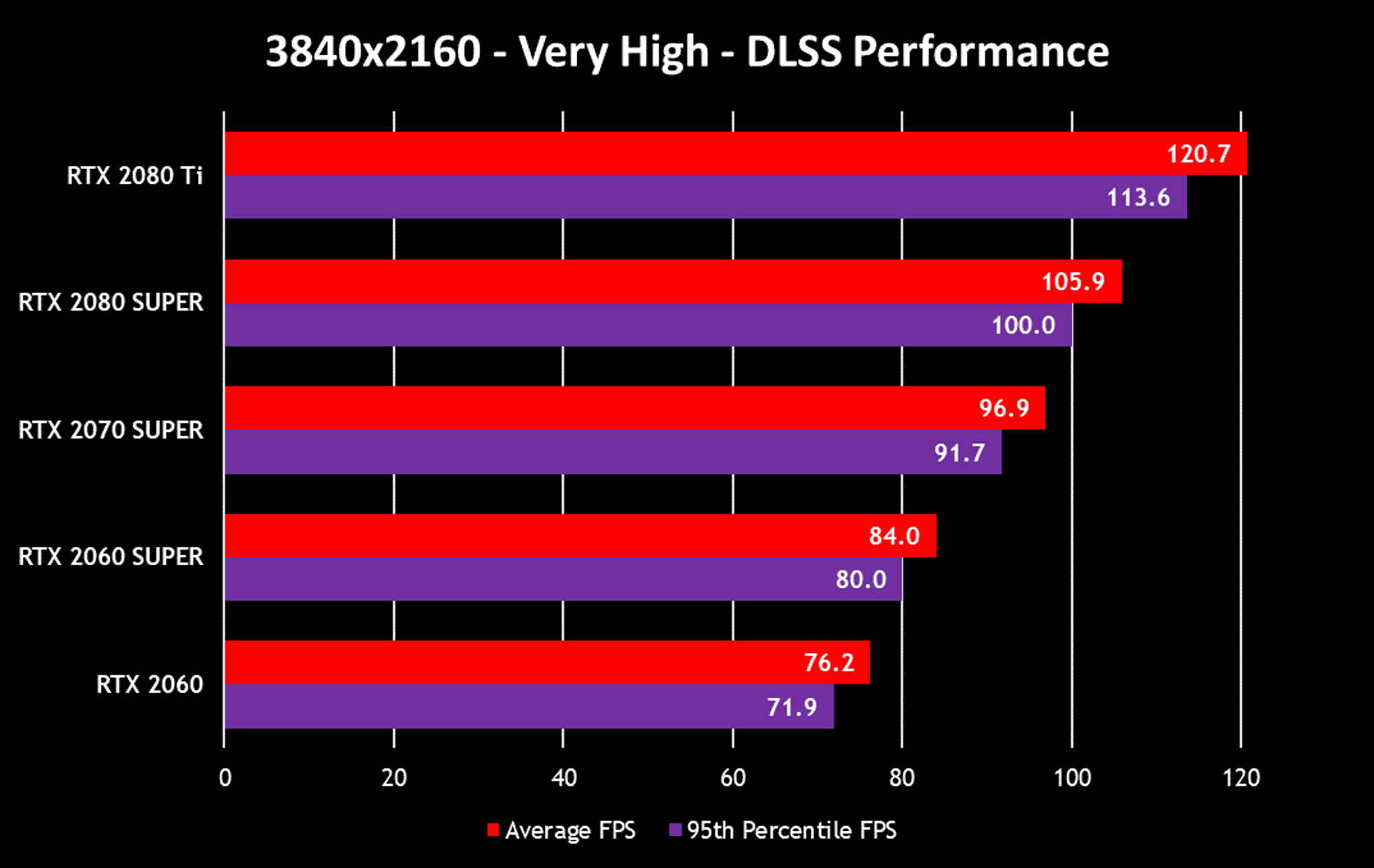
Every GeForce RTX card can tackle Death Stranding at 4K. That’s a testament to the technical wizardry of DLSS 2.0. The more powerful cards don’t just handle the higher pixel count—they do so with fluid grace. Across the board, the 95th-percentile fps figures are close to the average fps results, indicating consistently smooth animation.
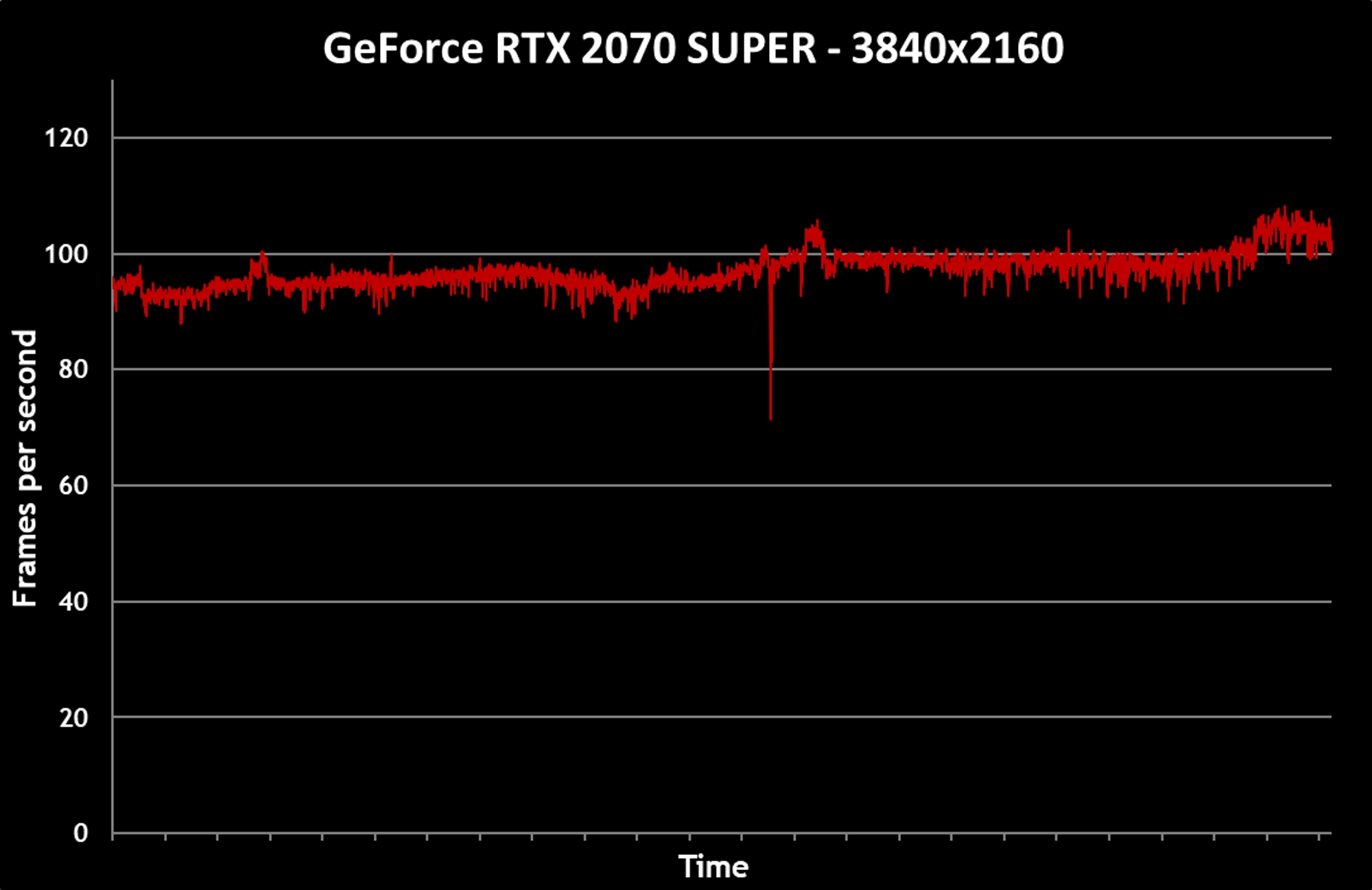
Don’t let us stop you if you want to play this game at 4K with an RTX 2080 SUPER or RTX 2080 Ti, but don’t underestimate the RTX 2070 SUPER. Its frame rates here show excellent consistency. There’s a brief dip downward about halfway through the test, but it didn’t even drop below 60 fps at that point. On a variable-refresh-rate monitor, you wouldn’t even notice that moment.
| ROG Strix GeForce RTX 2070 SUPER Advanced Edition | |
|---|---|
| Availability (USA) | Adorama Best Buy Micro Center |
| Availability (CAD) | Mike's Computer Shop Memory Express |
One of my favorite advantages of 4K is that you can play on an extra-large monitor without visible pixelation. I can personally vouch that the ROG Swift PG43UQ is perfect for playing Death Stranding at 4K. As it has a massive 43” 3840x2160 screen, I could comfortably set it up on a VESA mount and play in my armchair with a controller. But I love having it on my desk. Its wide screen nearly fills my field of vision, immersing me like no other display I’ve ever had. Its 144Hz refresh rate and VESA DisplayHDR 1000 support put the cherry on top.
| ROG Swift PG43UQ | |
|---|---|
| Availability (USA) | ASUS Amazon B&H Micro Center |
| Availability (Canada) | Memory Express |
Decided you need a GPU upgrade after poring over our performance charts? Here's where to buy the graphics cards tested in this article:
| ROG Strix GeForce RTX 2080 Ti OC Edition | |
|---|---|
| Availability (USA) | ASUS Newegg Amazon B&H Best Buy Microcenter |
| Availability (CAD) | Newegg |
| ROG Strix GeForce RTX 2080 SUPER Advanced Edition | |
|---|---|
| Availability (USA) | ASUS Central Computers Micro Center Staples |
| Availability (CAD) | Mike's Computer Shop |
| ROG Strix GeForce RTX 2070 SUPER Advanced Edition | |
|---|---|
| Availability (USA) | Adorama Best Buy Micro Center |
| Availability (CAD) | Mike's Computer Shop Memory Express |
| ROG Strix GeForce RTX 2060 SUPER OC Edition | |
|---|---|
| Availability (USA) | Adorama |
|
Availability (CAD) |
Memory Express |
| ROG Strix RTX 2060 OC Edition | |
|---|---|
| Availability (USA) | Newegg Amazon B&H Micro Center |
| Availability (CAD) | Memory Express Mike's Computer Shop |
| ROG Strix GeForce GTX 1660 SUPER Advanced Edition | |
|---|---|
| Availability (USA) | ASUS Newegg Amazon Micro Center |
|
Availability (CAD) |
Newegg Memory Express Staples |
The PC is the way to play Death Stranding
Death Stranding’s unique gameplay, unearthly enemies, and lushly detailed yet disconcertingly barren vistas have cemented it as one of the most intriguing releases in recent years. Our detailed testing shows that ROG Strix GeForce GTX and GeForce RTX GPUs deliver stellar frame rates in Death Stranding, no matter which resolution you prefer.
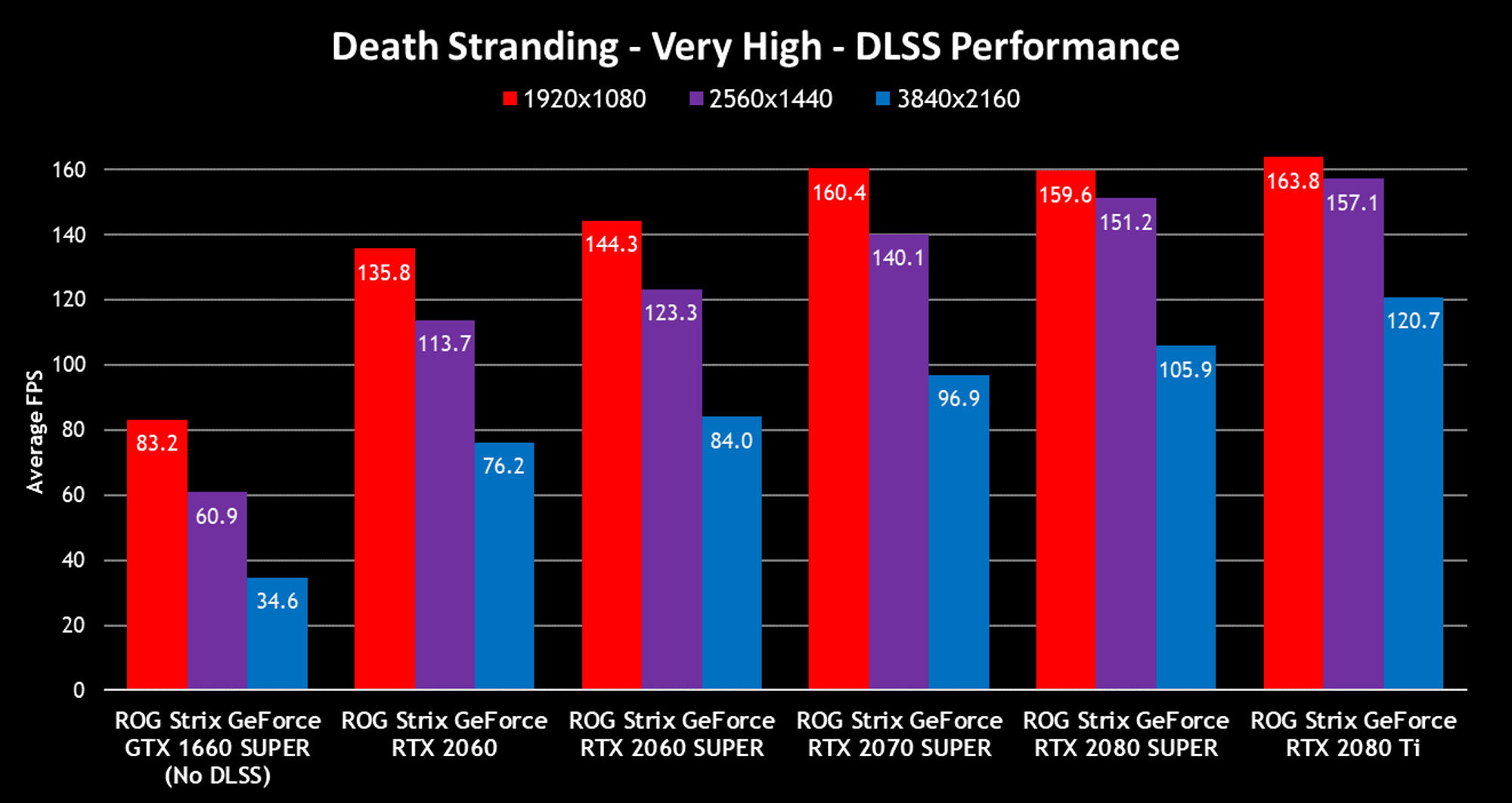
At the common 1920x1080 resolution, every GPU (including the GeForce GTX 1660 SUPER) serves up such high frame rates that it’d be a shame to connect them to anything but a high-refresh-rate display. Excellent across-the-board results at 2560x1440 show why so many gamers consider it to be the current sweet spot between visual fidelity and fluid performance. And if you enable NVIDIA’s DLSS 2.0 technology, every GeForce RTX card can handle 4K gaming at 60 fps or better, even at the game’s highest graphics preset.
Thanks to its higher graphics setting presets, options for higher refresh rates and resolutions, and support for ultrawide aspect ratios, Death Stranding's PC release is undeniably the best way to play this game. Those settings are easy to refine for a playable experience across a wide range of graphics cards, too, making this unabashedly AAA release widely accessible to PC gamers of all stripes. No matter how you look it, Death Stranding's PC release is a performance winner.


